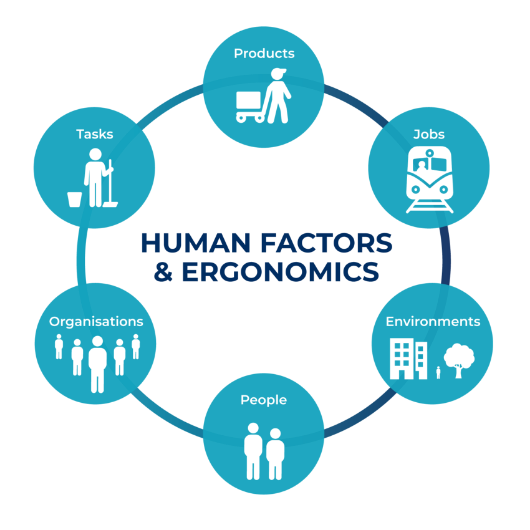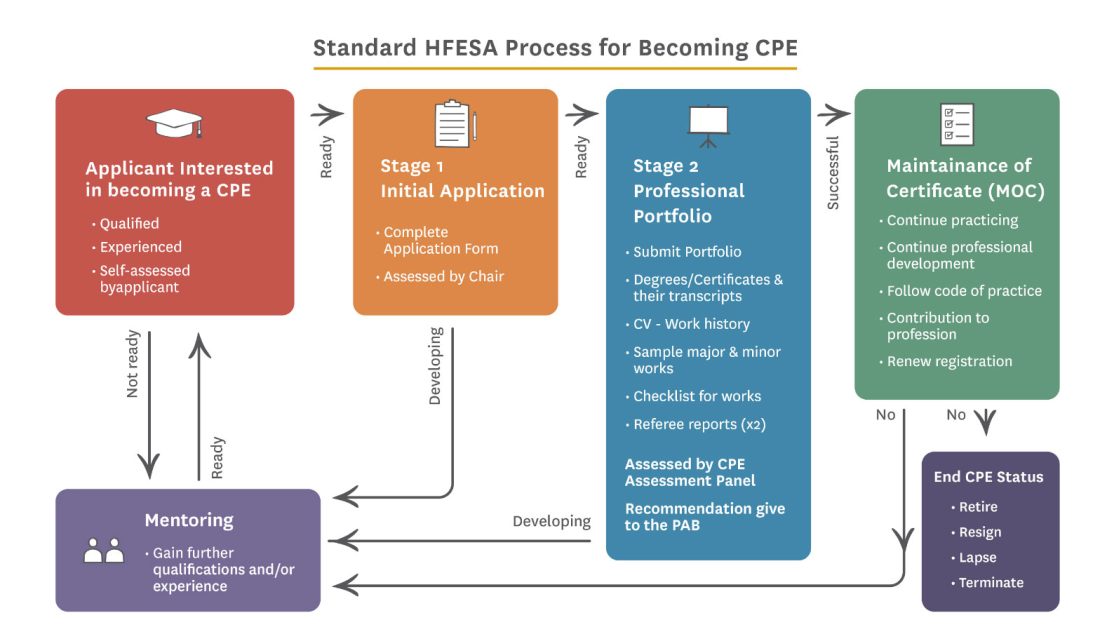Notice to potential Certified Professional Ergonomists (CPEs)
The Human Factors and Ergonomics (HFE) Professional Affairs Board (PAB) in Australia has recently adopted the International Ergonomics Association (IEA) HFE competencies as its benchmark. Consequently the PAB Certification Committee has just commenced a review to ensure that that its processes and standards are compatible with these.
As a result, from 8 May 2024, the PAB will not accept any new applications until this action has been completed. We expect that some changes will be required and these will take up to six months to compile and endorse. The PAB does not anticipate too many changes in what an applicant is required to submit, although the assessment process might change a little.
In the meantime the PAB suggests that any person wishing to submit an application for Certification starts compiling the evidence that is required under the current system and prepare a draft portfolio of the work that you intend to submit. The PAB will post a notice on the Human Factors and Ergonomics Society of Australia’s (HFESA’s) website and in the regular Member updates when its work on this has been completed and the new guidelines have been prepared. It will then be able to accept applications under the new Rules.
Certified Professional Ergonomists (CPE) have been certified by HFESA and have demonstrated that they have the skills and experience to provide high quality and consistent advice and support in the area of HFE.
CPE is the highest level of HFE status awarded in Australia.
DOMAINS OF SPECIALISATION
Derived from the Greek words ‘ergon’ (work) and ‘nomos’ (laws) to denote the science of work, HFE is a systems-oriented discipline which now extends across all aspects of human activity. Practising HFE professionals must have a broad understanding of the full scope of the discipline. That is, HFE promotes a holistic approach in which considerations of physical, cognitive, social, organisational, environmental and other relevant factors are taken into account. HFE professionals often work in many sectors or application domains. Application domains are not mutually exclusive and they evolve constantly; new ones are created and old ones take on new perspectives.
There are domains of specialisation within the discipline, which represent deeper competencies in specific human attributes or characteristics of human interaction.

Domains of specialisation within the HFE discipline are broadly the following:

Physical Ergonomics
Physical ergonomics (HFE) is concerned with human anatomical, anthropometric, physiological and biomechanical characteristics that relate to physical activity. Relevant topics include working postures, materials handling, repetitive movements, work-related musculoskeletal disorders, workplace layout, safety and health.

Cognitive Ergonomics
Cognitive ergonomics (HFE) is concerned with mental processes, such as perception, memory, reasoning, and motor response that affect interactions among humans and other elements of a system. Relevant topics include mental workload, decision-making, skilled performance, human-computer interaction, human reliability, work stress and training.

Organisational Ergonomics
Organizational ergonomics is concerned with the optimization of sociotechnical systems, including their organizational structures, policies, and processes. (Relevant topics include communication, crew resource management, work design, design of working times, teamwork, participatory design, community ergonomics, cooperative work, new work paradigms, virtual organizations, telework, and quality management.) Organisational Ergonomics.
Source: International Ergonomics Society (IEA)
To become a CPE, the applicant must have:
- Completed a tertiary education program that includes a comprehensive set of the required IEA’s HFE competencies.
- Expertise in HFE demonstrated through the provision of at least one major work sample, supported by one or more work samples or products of smaller magnitude.
- A minimum of four years of full-time practice in HFE or the part-time equivalent.
The applicant needs to provide suitable references for the Professional Affairs Board to validate the application.
CPE PROCESS
The CPE Process flowchart describes the steps required to become a Certified Professional Ergonomist.
